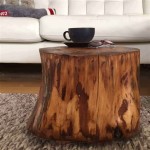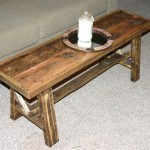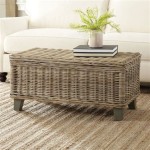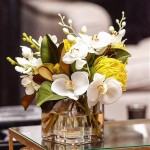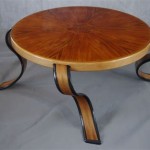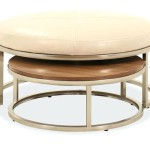How Thick Should A Tempered Glass Table Top Be Used For Cooking?
Tempered glass tabletops offer an aesthetically pleasing and modern surface for various applications. Their durability compared to standard glass makes them a popular choice for dining tables, coffee tables, and even countertops. However, using a tempered glass tabletop explicitly for cooking purposes raises safety concerns and requires a careful evaluation of its suitability. The thickness of the glass is a critical factor influencing its ability to withstand the thermal stress and impact associated with cooking activities.
The primary concern when considering using a tempered glass tabletop for cooking is its susceptibility to thermal shock. Thermal shock occurs when a material experiences a sudden and significant temperature change. This can lead to cracking or even shattering, particularly if the material has pre-existing flaws or inconsistencies. While tempered glass is designed to be more resistant to thermal shock than annealed glass, it is not impervious. The degree of resistance depends heavily on the glass's thickness, quality, and the temperature differential it is exposed to.
Another concern is the potential for impact damage. While tempered glass is significantly stronger than standard glass, it can still be damaged by impacts, especially at its edges and corners. Dropping heavy pots or pans onto a tempered glass surface could cause it to crack or shatter. The thickness of the glass plays a crucial role in its ability to withstand such impacts.
It is important to understand that tempered glass tabletops are generally not designed or intended for direct cooking. They are typically manufactured for aesthetic and functional purposes in furniture, where they are expected to withstand moderate use and ambient temperatures. Adapting them for cooking involves exposing them to conditions that exceed their intended design parameters.
Understanding Tempering and Glass Strength
The tempering process involves heating annealed glass to a high temperature and then rapidly cooling it. This creates a compressive stress layer on the surface of the glass, while the interior remains in tension. This compressive stress gives tempered glass its increased strength and resistance to breakage. When tempered glass breaks, it shatters into small, blunt fragments instead of sharp shards, reducing the risk of serious injury. However, the degree to which the tempering process improves the glass's strength and thermal resistance depends on several factors, including the quality of the glass, the evenness of the heating and cooling process, and, critically, the thickness of the glass.
Thicker tempered glass provides a greater buffer against thermal shock because the temperature gradient across the glass is less pronounced. A thicker piece of glass has more mass to absorb and dissipate heat, reducing the likelihood of a significant temperature difference between the surface and the interior. Similarly, thicker glass is more resistant to impact because it can better distribute the force of the impact across a larger area.
The strength of tempered glass is typically measured in terms of its modulus of rupture, which indicates the stress it can withstand before breaking. The modulus of rupture increases with the thickness of the glass. Therefore, a thicker tempered glass tabletop will have a higher modulus of rupture and be better able to withstand both thermal stress and impact.
Thickness Recommendations and Considerations
While there is no universally defined "safe" thickness for a tempered glass tabletop used for cooking, a minimum thickness of ½ inch (12mm) is generally considered necessary for applications where heat and impact are a concern. However, even with this thickness, caution is paramount, and direct contact with extreme heat sources should be avoided. This recommendation assumes that the glass is of high quality and has been properly tempered. Lower-quality glass or improperly tempered glass may require even greater thickness to achieve comparable strength and heat resistance.
Several factors must be considered when determining the appropriate thickness of a tempered glass tabletop for cooking. These include the type of cooking being done, the size and shape of the tabletop, and the support structure beneath the glass. If the tabletop is used primarily for serving hot dishes rather than direct cooking, a slightly thinner thickness (e.g., 3/8 inch or 10mm) might suffice, provided that hot dishes are placed on trivets or heat-resistant mats.
For applications involving direct cooking, such as using portable induction cooktops or placing hot pots and pans directly on the surface, a thicker glass (½ inch or 12mm or thicker) is highly recommended. It is crucial to ensure that the glass is properly supported to prevent flexing or bending, which can increase the risk of breakage. A solid, evenly distributed support structure is essential to distribute the weight and stress evenly across the surface of the glass.
The size and shape of the tabletop also influence the required thickness. Larger tabletops, especially those with irregular shapes, are more susceptible to flexing and stress. In such cases, a thicker glass is necessary to provide adequate support and prevent breakage. Circular or square tabletops generally distribute stress more evenly than rectangular or irregularly shaped ones, but thickness remains an important consideration.
Safe Practices and Alternatives
Given the inherent risks associated with using tempered glass tabletops for cooking, it is essential to adopt safe practices to minimize the risk of breakage and injury. The most important precaution is to avoid direct contact between the glass surface and extreme heat sources. Hot pots, pans, and other cooking utensils should always be placed on trivets or heat-resistant mats to create a buffer between the heat source and the glass.
Another safe practice is to avoid sudden temperature changes. Do not pour cold liquids onto a hot glass surface, as this can cause thermal shock. Allow hot dishes to cool slightly before placing them on the glass. Similarly, avoid exposing the glass to direct sunlight for extended periods, as this can also cause temperature fluctuations that can lead to cracking.
Care should be taken to prevent impacts on the glass surface. Avoid dropping heavy objects onto the table, especially near the edges and corners. Use placemats and coasters to protect the glass surface from scratches and abrasions. Regularly inspect the glass for any signs of damage, such as chips, cracks, or scratches. If any damage is detected, the tabletop should be replaced immediately to prevent further breakage.
If direct cooking is a primary requirement, alternative materials such as granite, quartz, or stainless steel are often better choices for countertops and tabletops. These materials are more resistant to heat, impact, and scratches than tempered glass and are specifically designed for cooking applications. Granite and quartz offer a natural stone aesthetic with excellent durability, while stainless steel provides a hygienic and heat-resistant surface that is easy to clean.
Another alternative is to use a separate cooking surface, such as a portable induction cooktop or a hot plate, on top of the tempered glass tabletop. This allows for cooking without directly exposing the glass to excessive heat. However, it is still essential to use heat-resistant mats or trivets under the cooktop to protect the glass from any residual heat.
In summary, while tempered glass tabletops can offer an attractive and functional surface, using them for cooking requires careful consideration of the glass's thickness, quality, and the specific cooking activities involved. A minimum thickness of ½ inch (12mm) is generally recommended for applications where heat and impact are a concern, but even with this thickness, caution is essential. Adopting safe practices, such as using trivets and avoiding sudden temperature changes, can help minimize the risk of breakage and injury. For applications involving direct cooking, alternative materials such as granite, quartz, or stainless steel are often better choices.

What Is The Best Thickness For A Glass Table Top Cbd

Glass Countertops For Kitchens Bars Or Bathrooms Innovate Building Solutions

Should You Use Glass To Protect A Wood Table Cutesy Crafts

How Thick Should A Glass And Wood Tabletop Be Flowyline Design

Fab Glass And Mirror 24 In Clear Square Table Top 1 2 Thick Flat Polished Tempered Radius Corners 24sqr12thflan The Home Depot

What Is The Best Thickness For A Glass Table Top Cbd

Premium Glass Window Solutions To Enhance Your Home Tabletop Toughened Polished 6mm 8mm

We Put A Glass Top On Our Wooden Kitchen Table Jill Cataldo

Fab Glass And Mirror 14 In Clear Round Table Top 1 2 Thickness Tempered Beveled Edge Polished 14rt12thbean The Home Depot

Fab Glass And Mirror 32 In Clear Round Table Top 1 2 Thickness Tempered Beveled Edge Polished 32rt12thbean The Home Depot
Related Posts

